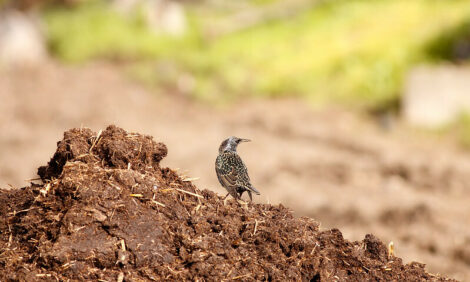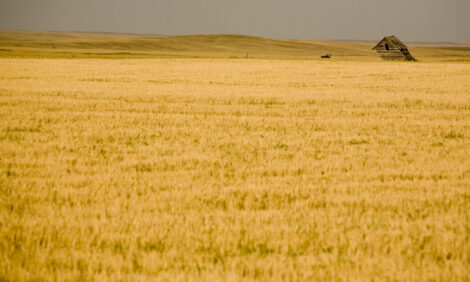



Better Accuracy, Hatchability, Protection Seen in Birds Vaccinated with Dual-Needle System
GLOBAL - Broiler studies demonstrate that a dual-needle in ovo delivery system yields more accurate vaccine placement, better hatchability and better disease protection compared to a single-needle system.In one of the studies conducted at two US broiler hatcheries, investigators used dye to determine the accuracy of a Marek’s disease vaccine delivered with dual- and single-needle in ovo systems, says in an article for Poultry Health Today Tarsicio Villalobos, DVM, of Zoetis, which initiated the study.
At the first hatchery, the Embrex® Inovoject® dual-needle system correctly vaccinated more than 95% of 1,179 eggs compared to 61% of 1,138 eggs vaccinated with a single-needle system. At the second hatchery, the dual-needle system correctly vaccinated 91% of 926 eggs compared to 72% of 910 eggs with the single-needle system, he reports.1
Challenge study
In a subsequent US challenge study also initiated by Zoetis and believed to be the first of its kind, broiler eggs from the same origin were injected at 18 days of incubation with either the Embrex Inovoject dual-needle system or a single-needle system. The Marek’s vaccine delivered was a herpesvirus of turkey (HVT) vaccine, which is commonly used in the broiler industry, he says.
The hatch rate of eggs in breeder flocks at 40 to 61 weeks of age was numerically higher for those inoculated with the dual-needle compared to the single-needle system. When investigators challenged both groups of birds on day one of age with the RB1B strain of Marek’s disease virus and evaluated them for 7 weeks, they found birds from the dual-needle group had significantly fewer tumors (p ≤ 0.05), indicating a higher level of protection against early challenge compared to the single-needle and unvaccinated groups (Fig. 1).2,3

Figure 1. Level of protection against Marek’s disease with the dual- and single-needle injection systems2,3
abDifferent letters indicate significant differences (p≤0.05)
“This finding indicates the dual-needle system correctly delivered the vaccine and allowed for better replication of vaccine virus,” Villalobos says.
In addition, the dual-needle group had better weight gain — 3.24 kg (7.14 lb) versus 3.15 kg (6.94 lb) at 49 days — indicating that good vaccine delivery correlates with higher bodyweight at processing, he says.3
“To my knowledge, this was the first study that employed a viral challenge to compare the efficacy of in ovo vaccine application devices for delivering an HVT vaccine,” Villalobos notes.
System differences
With the dual-needle system, one needle — the punch — punctures the shell and another needle inside the punch delivers the vaccine, explains Christopher Williams, director of technical services for Zoetis biodevices. “The needle delivering the vaccine never touches the shell,” he says, “so it’s a cleaner procedure than a single-needle system that uses the same needle to puncture the shell and deliver vaccine.”
With the single-needle system, there’s a greater risk for contamination because the needle has a greater surface area, which can make it more difficult to effectively sterilize between injection cycles. That can increase the risk of bacterial carry-over from egg to egg, Williams says.
These problems are less likely to occur with the dual-needle system because the needle that delivers the vaccine is not only protected by the punch, it has less surface area than single-needle injectors, he says.
Another advantage of the dual-needle system that’s critical to successful in ovo vaccination is the ability of the injector to locate the correct site of injection on the egg shell surface. If eggs in the incubation tray are tilted, the system compensates by adjusting the angle of entry to help ensure the vaccine is delivered to the proper site. The single-needle system does not compensate for tilted eggs, Williams explains.
Villalobos adds, “We believe these are the reasons that results from the single-needle group in the US challenge study were similar to those in unvaccinated controls.”
When selecting an in ovo vaccine delivery system, Villalobos advises, it’s important to consider the general reliability and speed of the equipment and whether the system promotes good sanitation. The system should allow for vaccine delivery only to candled live eggs, which can yield savings on vaccines. These studies demonstrate that the type of needle system is another important factor to consider.
_______________
1 Williams CJ, Hopkins BA. Field evaluation of the accuracy of vaccine deposition by two different commercially available in ovo injection systems. Poult Sci 2011; 90:223-226. doi:10.3382/ps. 2010-00759.
2 Barbosa T, et al. Efficacy and Marek’s disease protection comparison between different vaccination methods. World Veterinary Poultry Association French Branch. Nantes, France, 2013.
3 Data on file, Study Report No. 03-12-70R7B, Zoetis LLC.









